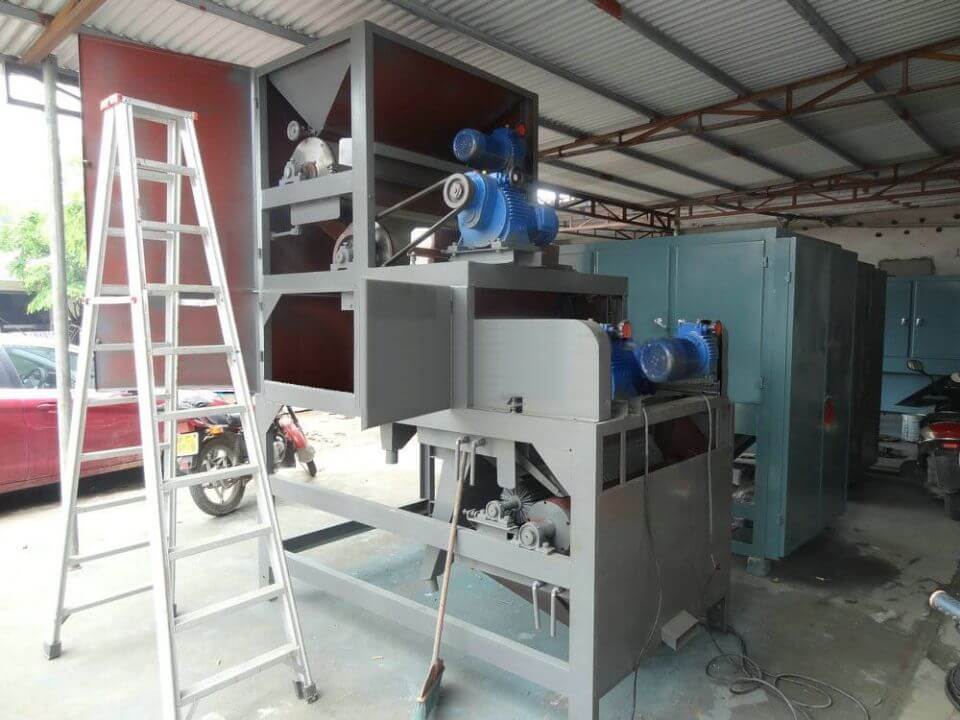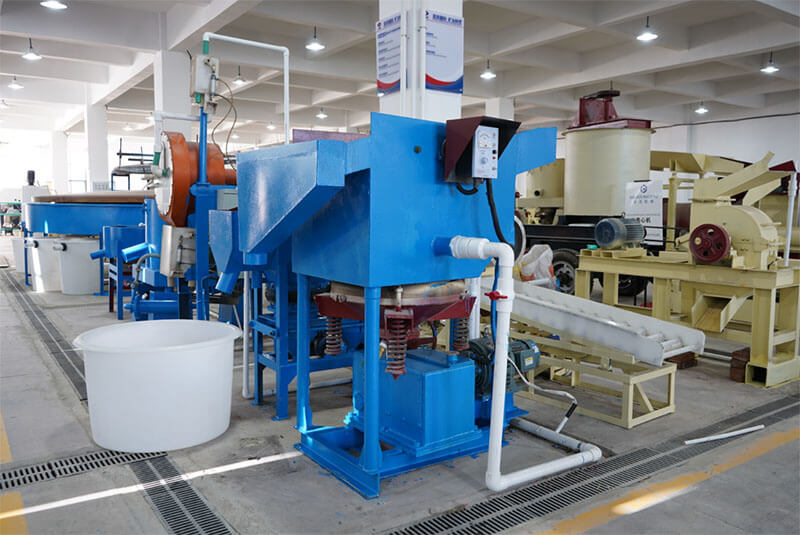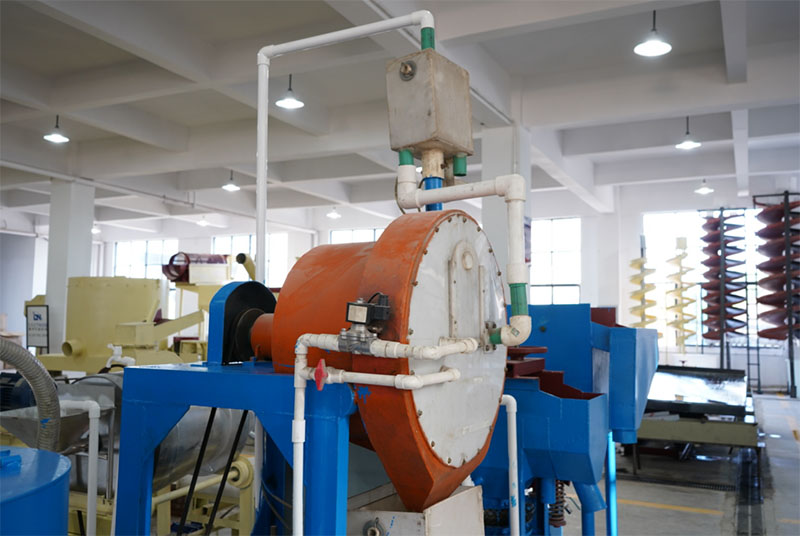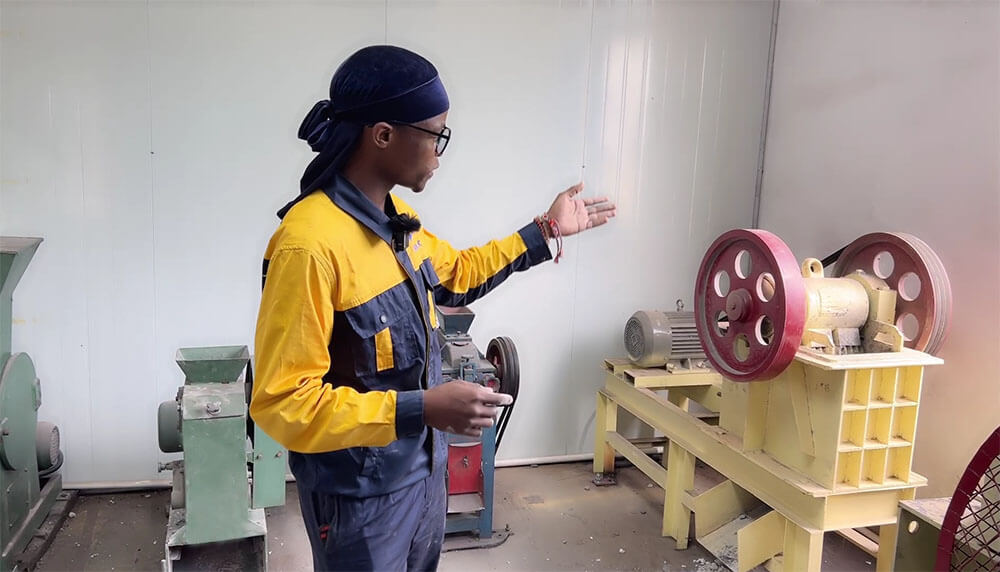Barite is an essential mineral resource widely used in many industries and fields. The grade of raw barite is generally low, so it needs beneficiation and purification to improve the content or density of barite. What are the beneficiation equipment and methods for barite? Generally, residual-type barite ore is easy to process. It usually adopts the gravity separation method for barite beneficiation. Sedimentary barite and barite ore are associated with sulfide ore, fluorite, etc. In addition to the gravity separation method, barite beneficiation also uses the flotation method for separation.
Barite Beneficiation Process
Due to the high specific gravity of barite and the low specific gravity of gangue, the method for barite beneficiation is the gravity separation process. The major equipment is the jig separator.
- The raw barite ore first enters mining equipment such as stone crushers and ball mills.
- The materials then enter the screening equipment such as vibrating screens.
- The graded materials enter the jigging machine for separation.
- The screened materials enter the ball mills for grinding, then the flotation machines to obtain barite concentrate. The barite concentrate contains a large amount of water.
- If it is necessary to reduce the moisture in barite, add dewatering equipment such as thickeners to obtain dry barite concentrate.
Lab Barite Beneficiation Equipment
1. Jaw crusher – crush the raw barite ore to smaller stones
The laboratory jaw crusher is suitable for lab production to get fine and medium crushing materials. It is environmental protection equipment for laboratories in industries such as coal, electricity, mining, geology, chemical, metallurgy, building materials, and chemical engineering. It can roughly crush various ores and materials. It has the advantages of a large crushing ratio, uniform particle size, adjustable discharge particle size, etc. This machine meets the crushing requirements in various aspects such as laboratory testing and mineral processing. We only need to place it on a flat ground to work properly. There is no need for basic processing and the integrated operation of electromechanical control is convenient.
Equipment introduction: The jaw crusher suitable for rough and preliminary crushing on rocks and mineral ores with high hardness, and the effect is good.
Experiment process
Put about 100mm of barite ore into the feed port of the jaw crusher. After starting, crush the material to 20-30mm through two teeth plates squeezing each other.
2. Hammer Crusher – Crush barite to below 5mm
The sealed hammer crusher is suitable for crushing medium-hard materials such as limestone, slag, coal, etc. In industrial sectors such as cement, chemical, power, metallurgy, etc. The sealed hammer crusher belongs to the chopping crushing type. By relying on the high-speed rotation of the rotor for the hammerhead or body with hammering force to crush the material. The whole machine is seal-type, avoiding dust pollution.
Equipment introduction: The hammer crusher can crush small rocks to less than 5mm. There is a layer of sieve net at the mouth of the hammer crusher to ensure that the discharge is less than 5mm.
Experiment process
Put the barite ore into the feed port of the hammer crusher. After starting, the hammerhead of the hammer crusher will crush the barite ore. Finally, we will get slightly less than 5mm of sand ore.
3. Jig separator – barite ore and waste sand separation
The jig machine is for mineral gravity separation. Based on the proportion of ore and different sedimentation speeds in the medium, use the difference in mineral weights to complete the layered selection of the mineral pellet mixture. It is suitable for experimental research in black and non-ferrous metals, chemistry, architecture, and other aspects.
Equipment introduction: The jig separator machine screen the concentrate from the ore discharge through gravity separation.
Experiment process
Put the crushed and screened barite into the feeding port of the jig separator. The sawtooth wave first rises in a straight line, then falls, then rises again, and then falls again, repeating the process. It uses water as the mineral processing medium and separates according to the specific gravity difference between minerals and gangue. It is a non-precious metal that is very suitable for screening and beneficiation, and ultimately we obtain barite concentrate.
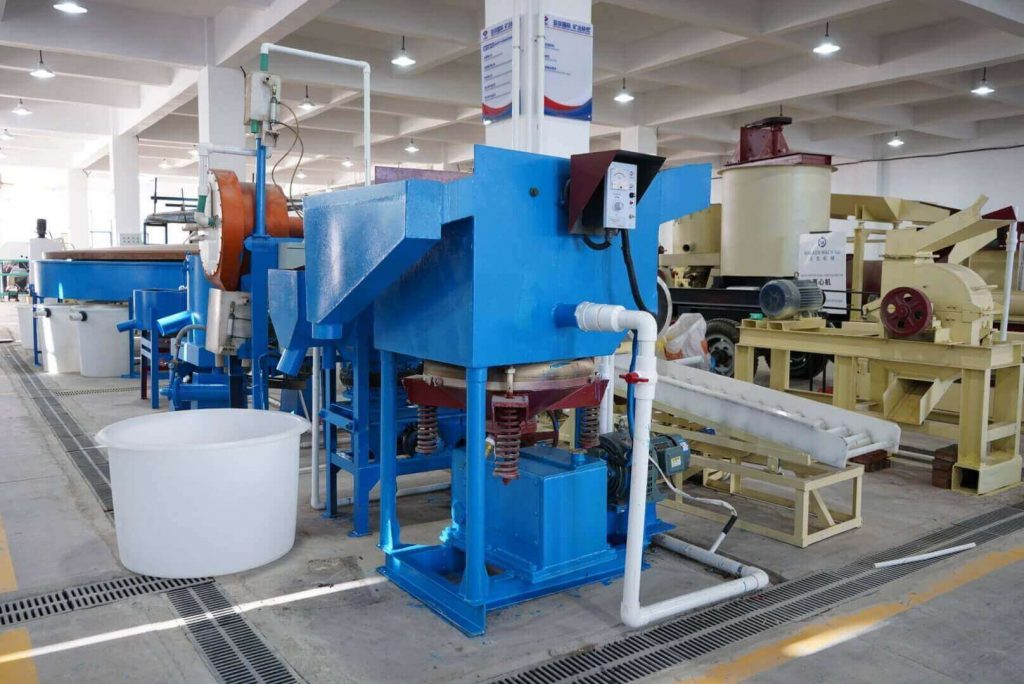
Ball mill – grinding
Ball mills are mainly used for grinding materials to achieve 0-80 mesh or finer products. It is equipment for small-scale production and ultra-fine grinding.
Purpose: To finely grind materials
Experiment process
After crushing and screening, pour the material into a ball mill and ground it with steel balls. At this point, you can see that the ball mill rotates continuously, and the grinding steel balls inside will grind the material into fine particles.
Other metal ores such as copper, gold, and chromium also use ball mills.
Flotation machine
The laboratory flotation machine utilizes the bubble’s buoyancy and adhesion ability to separate valuable minerals from other impurities. The principle is simple and easy to understand, and the operation is convenient. It is one of the major equipment for mineralogical research and mineral processing technology development in the mining, metallurgy, and chemical industry.
Purpose: Enriching concentrate
The laboratory flotation machine is a separation equipment that requires the addition of conventional reagents. The chemicals for handling different materials also vary.
Experiment process
Pour the slurry into the tank and dilute it with water to the desired concentration. Start the motor and add an appropriate amount of flotation agent according to the experimental requirements. When there is foam in the tank, turn on the switch of the scraper part to start flotation. After reaching the specified flotation time, turn off the motor and stop the impeller and scraper from running.
JXSC lab mineral processing equipment manufacturer has more than 38 years of experience in mining processing. We provide various lab mining equipment including gravity-separating equipment for processing minerals such as gold, tin, tungsten, lead, zinc, tantalum, niobium, iron, manganese, silver, titanium-iron, etc. Lab machines include laboratory jaw crusher, hammer crusher, roller crusher, grinding equipment, lab gravity separator, screening, washing equipment, etc. Welcome to consult!

